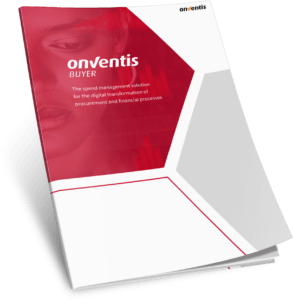What is spend analysis?
Even though spend analysis as a concept has been around since the birth of strategic sourcing in the mid 1980s, the general knowledge of the topic remains low. Many understand the big picture -spend has to do with the classification of expenditures, but fail to see the finer details that makes it a key lever to create compounding results in Category Management or Strategic Sourcing.

What is spend analysis?
Even though spend analysis as a concept has been around since the birth of strategic sourcing in the mid 1980s, the general knowledge of the topic remains low. Many understand the big picture -spend has to do with the classification of expenditures, but fail to see the finer details that makes it a key lever to create compounding results in Category Management or Strategic Sourcing. This series of blog posts (this is the first of many) is attempting to change that.
Defining Spend analysis
Spend analysis is a way to analyse an organisation’s expenditures from a procurement perspective. It is completed through collecting, cleansing, categorising and analysing all the external expenditures. Done correctly it becomes a key success factor for strategic procurement and category management in purchasing.
Spend is not an accounting term, it does not relate to the income statement or the balance sheet. Instead it is the collective term for all external expenditures that can be affected directly or indirectly by procurement. In practice that translates to all external expenditures with the exception of certain, but not all, taxes and governmental fees. See the illustration below for a visual overview.
The taxes and governmental fees should be excluded if they cannot be affected by the purchasing department. Take for example the corporate tax paid on the annual profit each year. It is an external expenditure, and it can be affected, but very rarely does the purchasing department have anything to do with managing it, so it should be left out of the spend. If the taxes or fees can be affected they should remain a part of the spend. For example import duties can often be affected by changing the global footprint and shifting suppliers to other regions, if so it should be included in the spend.
Confusing nomenclature: Spend cube, spend analysis, procurement analytics or spend management?
Spend cube and spend analysis
An older, outdated, alternative to a spend analysis is a spend cube. The “cube” describes the three dimensions that the spend could be analysed from; who is buying (e.g. which BU, department or cost center), what did they buy (e.g. what category, product/service) and from who did they buy it (e.g. supplier). Modern spend analysis is more sophisticated than relying on just three dimensions in isolation and therefore the expression “spend cube” has become antiquated. It does however still show up from time to time so it is good to know that when someone talks about a spend cube they really mean spend analysis.
Spend analysis and procurement analytics
There are other related expressions like procurement analytics that is often used as synonyms. However there is a difference between spend analysis and procurement analytics. The former includes only analysis of an organisation’s external expenses whereas the latter combine the spend analysis with other data sets to provide even more powerful insights.
For example by adding information about suppliers’ financials to your spend analysis you are able to see how many of your strategic suppliers have impaired financials or how large share of the spend you have with suppliers in certain categories. The more data you add than can be cross referenced to more potential insights.
The most common data sets to combine with your spend analysis are:
- Supplier financials
- Contract data – to see what has been bought on and off contract
- Purchase order (PO) Compliance – to see what has been bought with or without a Purchase Order
- Supplier performance (e.g. quality and delivery)
- CSR ratings
- Environmental impact
Spend analysis and spend management
Spend management (sometimes also Business Spend Management) is often defined along the lines: “All processes and activities required to fully manage external spend.” Simply put it is the full scope of what a procurement department does, out of which spend analysis is a small part.
Many people confuse spend management and spend analysis, which is perfectly understandable. It can be confusing navigating all these similar sounding concepts. But when illustrating the various concepts it becomes much clearer. If spend management is everything an organisation does, then procurement analytics is a subset of that.
Weitere BlogsMore BlogsMeer blogs





